Creative thinking is all about using our memories and imagination to connect the dots and create new solutions or new ways of thinking. Whether you’re an adaptive thinker or an innovative thinker, you can use your own style to be creative and solve problems. Keep on reading to find out more about the different styles of creative thinking and how to be more creative.
The full story
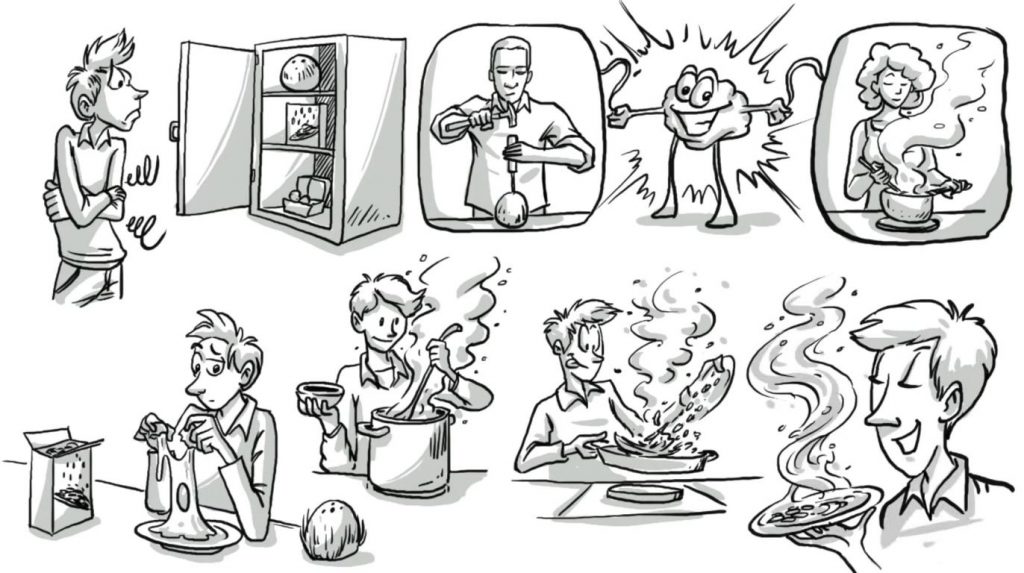
Imagine you are hungry and all you have at home is a coconut, some rice and an egg. If you have no clue and zero creative thoughts you’d probably eat the raw egg with unboiled hard rice while staring at the coconut. If however, you have memories of your dad cracking the coconut, and your mom boiling the rice, your brain can connect the dots and form a new creative idea. You boil the rice in coconut water, then fry it with the egg and add coconut flakes. Voila! Enjoy your meal!
Creativity
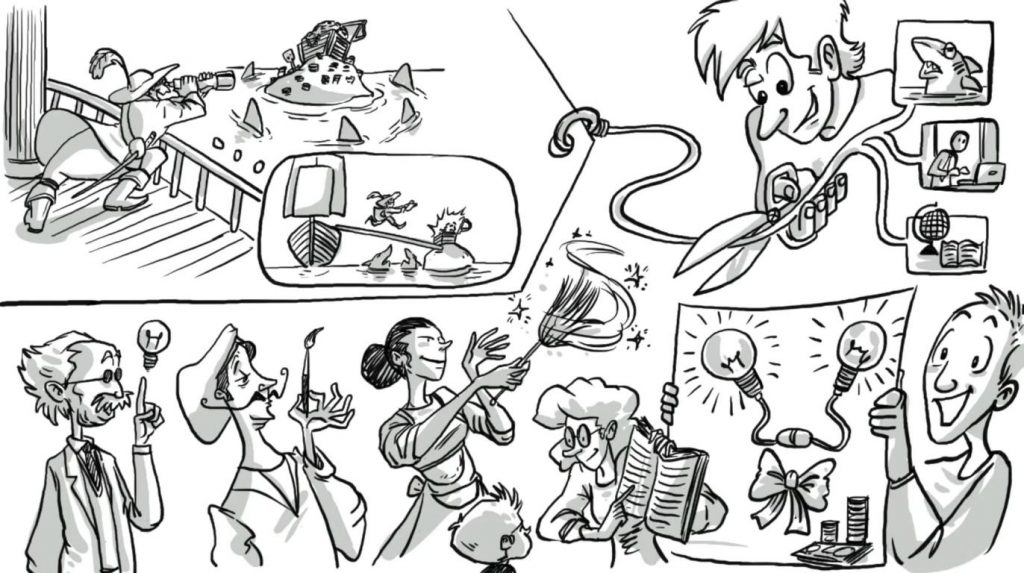
Creativity is our ability to look at a problem and come up with a good solution to solve it. Once we understand this, we realize that it has nothing to do with the subject matter, job or what we study. There are creative inventors and creative artists, but there are also very creative cleaners and highly creative teachers. People we worship for their creativity, often just connect different ideas in a beautiful new way and make them commercially successful.
The Adaption-Innovation Theory
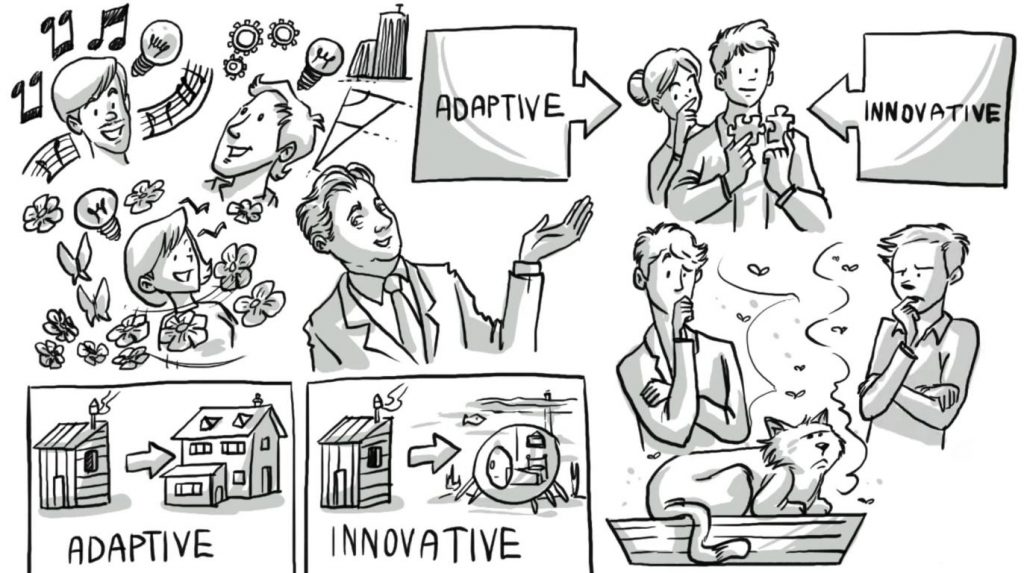
While all of us are creative, we differ in the way that we are and to which extent. Michael Kirton came up with the Adaption-Innovation Theory. He believes that when we solve problems we are either more adaptive or more innovative. People who are more adaptive-creative, try to do things better. People who are more innovative-creative, try to do things differently. To solve a specific problem, say that of smelly cat litter, both types would use a different approach.
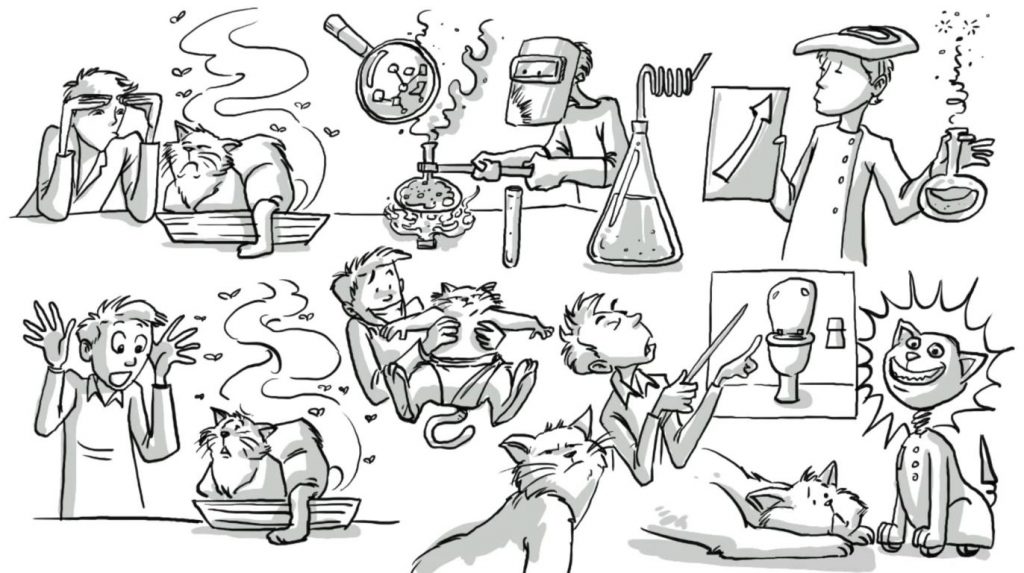
More adaptive types look for a solution inside the box. They might try to create better cat litter by looking at its chemical properties, then increase the size of the sand particles and finally add some refreshing tropical scent. More innovative creatives, think outside the litter box. They come up with cat diapers, cat schools for good manners or a robocat.
Divergent and convergent thinking
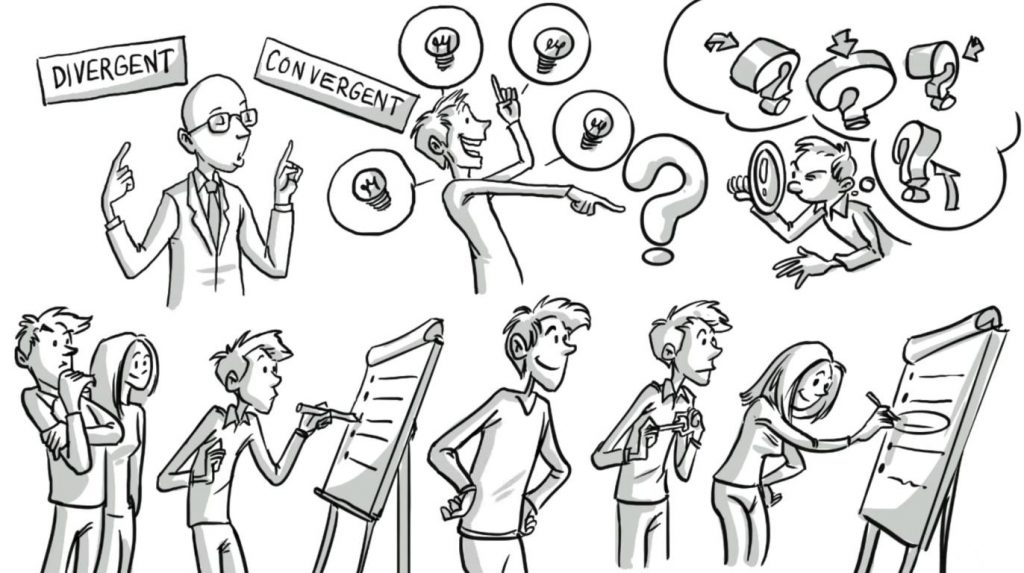
But there are also other differences. Psychologist J.P. Guilford and some others argue that there is divergent and convergent thinking. More divergent thinkers are better at coming up with lots of ideas when they see a problem. Convergent thinkers see all the details and are better at narrowing down the options. A diverse team is hence usually most effective when trying to solve problems. A divergent thinker can list many ideas. After, a convergent thinker can then look at each option in detail and then pick the best one. The result is better than if anyone would do it by themselves.
A new perspective
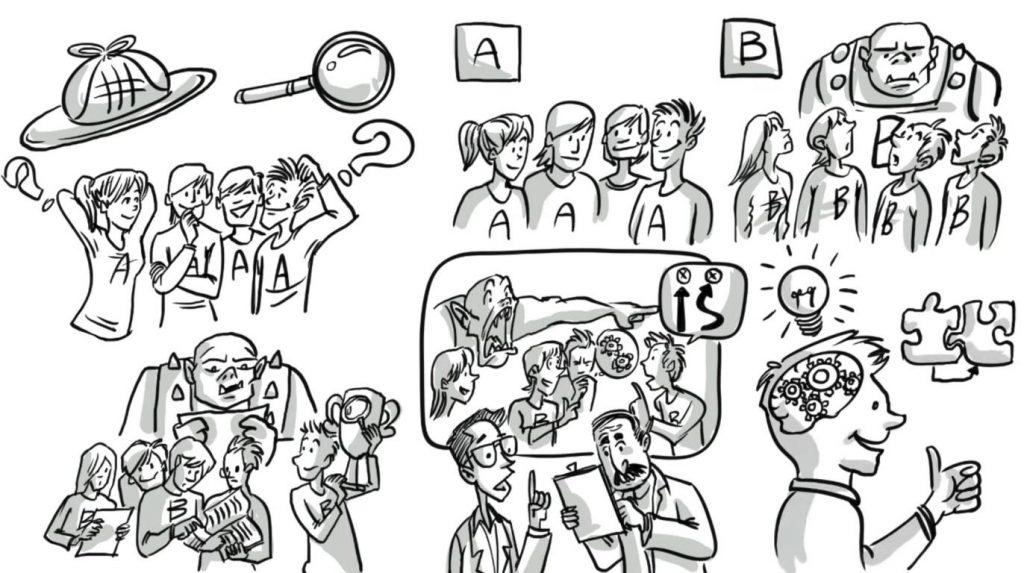
A murder mystery experiment involving two groups of students shows how creative diversity works. Group A was full of students from the same background. Group B was also all similar but joined by one single stranger. The students from group A enjoyed the process and felt like they worked together very well. The students in group B didn’t like having a stranger in their team, but they solved the mystery twice as fast and won the race. The researchers concluded that the stranger added a new perspective, making the group think harder, and making them more careful of drawing fast conclusions or falling into group-think. The result was a more intelligent problem-solving process.
How to be more creative
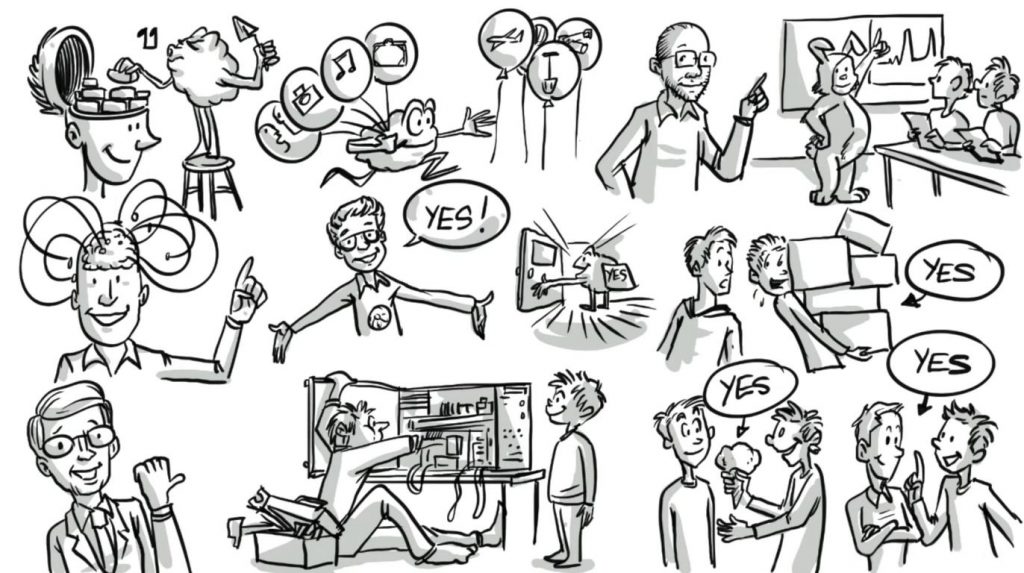
If we want to become more creative, we first have to build a collection of knowledge and memories, ideally by seeking new experiences. Only then we can increase the dots in our brain that we can connect. Clayton Christensen from Harvard Business School, recommends that parents should fix things at home all by themselves. Their children then learn that problems can be solved by ourselves and in many different ways. Jack Matson, professor of creativity at Penn State University, recommends to dress for failure. This gives us a new perspective and the ability to play new roles. Marc Schwyn, founder of MinuteVideos suggests practising saying yes! Because whenever we say yes, we open the door to new experiences. Can you help me? Want to try my ice-cream? Can I talk to you? Yes! Yes! Yes!
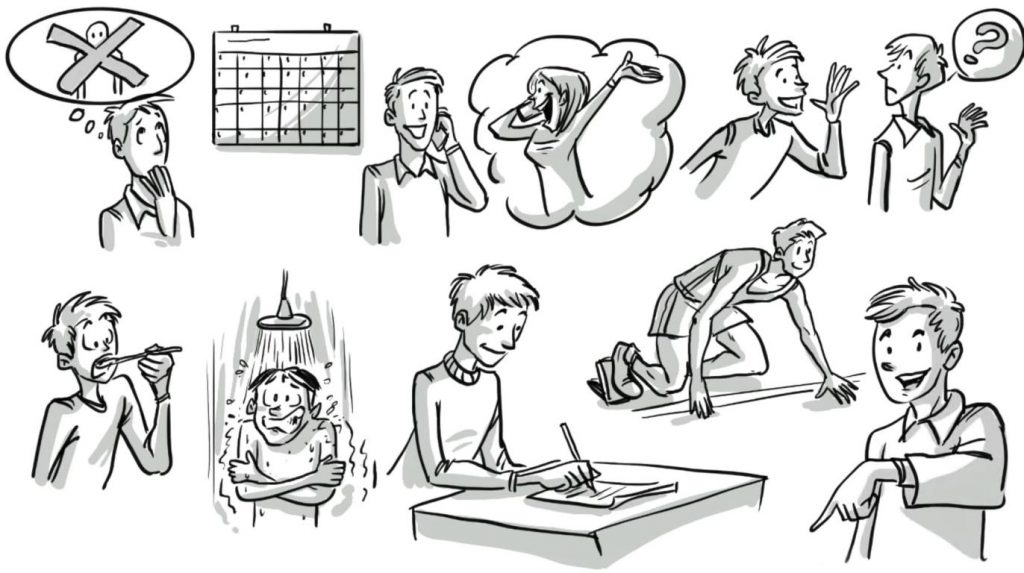
We recommend you do one thing you have never done before every day for at least one week, maybe a month. Call your weird aunt, talk to a stranger, eat using your left hand, or take a really really cold shower. Every evening write down what you did and what you’ve learned from it. Start with the first new thing right now and share your experience in the comments below right after.
“This made so much sense, thanks for sharing a great video!”
– Practice of the Practice
Sources
- The Kirton Adaption-Innovation Inventory – KAI centre website
- Cognitive style – Wikipedia
- Diverse Teams Feel Less Comfortable — and That’s Why They Perform Better – Harvard Business Review
Dig deeper
Classroom exercise
Try improving creativity levels in your own classroom. Start a project with your students where they each have to try one new thing a day, for a week. Have them present the new things that they tried, how it made them feel, and what they learned to the rest of the class. This will give them even more ideas for new and creative activities to try. Let us know in the comments below what your students learnt.
